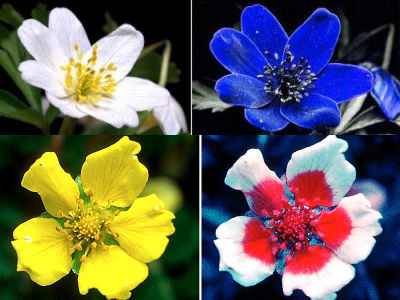Researchers warn that the rapid spread of LED lighting `` risks harming humans and animals ''

Humans install lights in various places to keep roads and buildings bright even at night, and the disruption of ecosystems and adverse effects on astronomical observations due to excessive light are attracting attention as ``
Environmental risks from artificial nighttime lighting widespread and increasing across Europe | Science Advances
https://doi.org/10.1126/sciadv.abl6891
Conversion to LED lighting brings a new kind of light pollution to Europe
https://phys.org/news/2022-09-conversion-kind-pollution-europe.html
Increase in LED lighting 'risks harming human and animal health' | Environment |
https://www.theguardian.com/environment/2022/sep/14/increase-in-led-lighting-risks-harming-human-and-animal-health
In recent years, research on light pollution caused by artificial light is progressing, but the main satellite data used for research has little information on the spectrum of light, and blue light (380- 450 nm) is not so sensitive. It is important to investigate the use of LED lighting in nighttime lighting, as the harmful effects of short wavelength blue light are gaining attention and the transition from narrow-spectrum sodium lamps to blue-rich LED lighting continues.
Therefore, the research team analyzed using ``photos of the earth taken by astronauts on board the International Space Station (ISS) with a digital single-lens reflex camera'' instead of data collected by satellite sensors. Although digital SLR photography is not systematic, an estimated 1.25 million nighttime photographs have been taken since 2003 alone, and are already being used in some local studies. About.
The research team used photographs taken by astronauts to create a 'composite nighttime color map of Europe' and analyzed the spectral characteristics of light sources in the periods 2012-2013 and 2014-2020. The image below is a nighttime color map of Europe from 2014 to 2020.

Below is a color-enhanced image of a nighttime photo of Belgium and surrounding countries in 2012-2013. Belgium, which can be seen in the center, has a strong orange light, indicating the use of low-

The image below is a side-by-side comparison of nighttime images in various European cities. The same cities are arranged side by side like 'A and B (Gibraltar)' and 'G and H (Brussels)', with the old image on the left and the new image on the right.

If you look at each city, you can see the difference. Milan, Italy (O in 2012 and P in 2015) and ...

In Birmingham, England (E in 2013 and F in 2020), the new image has a whitish color overall, and you can see that LED lighting is rapidly spreading. The research team reported that there was a large shift to LED lighting in countries such as the UK, Italy, and Ireland, while changes were small in countries such as Austria, Germany, and Belgium.

LED lighting is more energy efficient and lowers operating costs, but the research team points out that the increase in blue light associated with the spread of LED lighting will have an ``essential biological impact'' across Europe. It also claims that past studies have underestimated the effects of blue light.
Previous research suggests that blue light can affect the production of
Darren Evans, a conservation ecologist at Newcastle University who was not involved in the study, commented that the findings match his own findings that ``street lights are involved in reducing insect populations.'' Also, David Smith of Buglife , a UK-based conservation group, said, ``We should think about lighting from a broader biological perspective, not just humans.'' 'If we reduce the intensity of , it will be a safer environment for invertebrates as well as lower economic costs.'

Related Posts:







